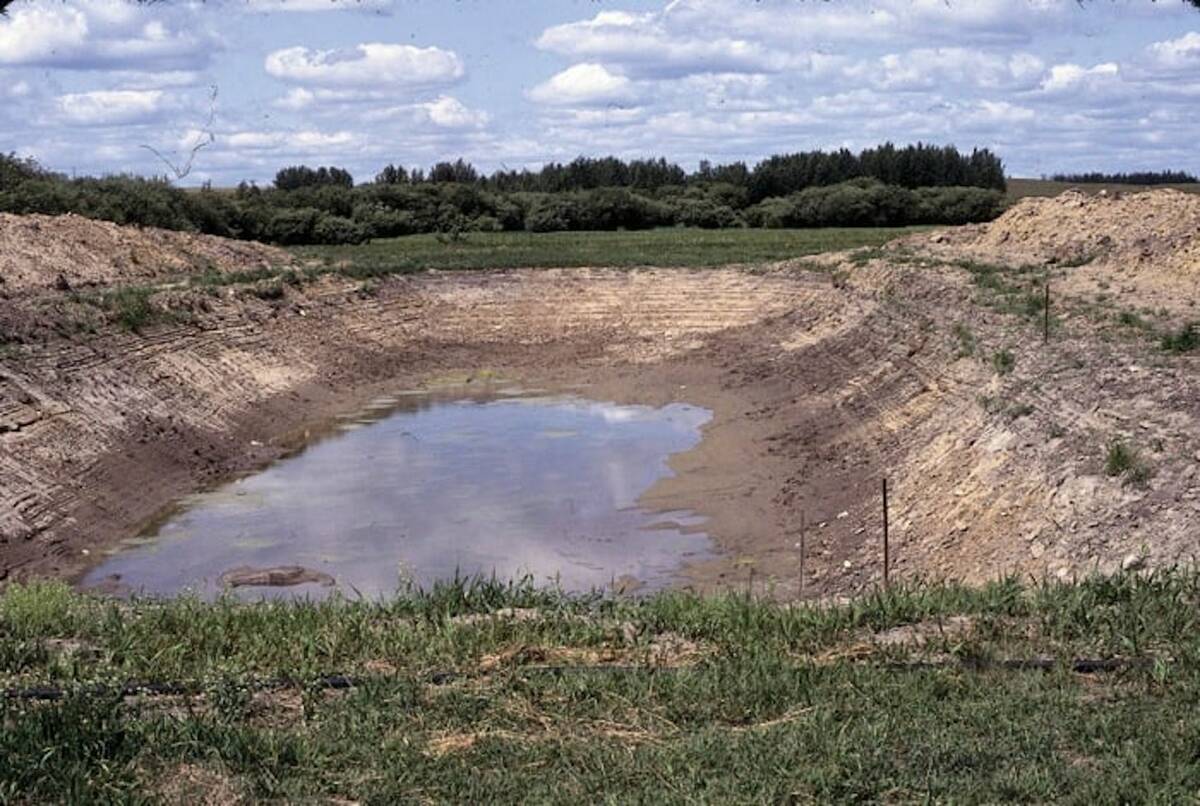They’re tiny things with a big impact, but just how important vitamins are for animal nutrition is a mystery because no one really studies them any more, a Quebec animal nutrition specialist says.
“It’s a real challenge for the future of production,” said Jacques Matte, an Agriculture Canada researcher from Lennoxville, Que., in an interview during the Western Nutrition Conference in Winnipeg on Sept. 19.
“We don’t feed the sow any more than we did in the past. Sometimes we feed even less. But we are producing six more piglets per sow (per year) than we did just 10 or 12 years ago.”
Read Also

Dry summer conditions can lead to poor water quality for livestock
Drought conditions in the Prairies has led to an decrease in water quality, and producers are being advised to closely monitor water quality for their animals.
Matte outlined his concerns about the dearth of vitamin research for animals in a presentation to the conference. He said research in the 1950s and 1960s proved that micronutrients can have a large impact on animals’ reproductive, growth and health performance.
But for more than 20 years there has been only a trickle of research on vitamins and animal health. This is a problem because today’s highly productive animals are different from the less productive animals of the 1970s and 1980s.
At the same time, research on macronutrients, such as protein, carbohydrates and fats, has continued and become the sole focus of many researchers and companies, Matte said. This has helped feed companies, breeders and farmers to expand the amount of meat they can produce with the same amount of feed.
But while macronutrients levels per pound of meat can be reduced, Matte said it is unclear just how much vitamin content farmers need to mix into those macronutrients to get maximum production.
Matte thinks vitamin research has died off because no one can easily make money from selling animal vitamins.
“Vitamins do not represent a big cost in the diet,” he said. “For feed companies, there’s no big interest.”
This is a marked contrast to vitamins for people, which is a booming business with good profits for manufacturers.
“In human nutrition it’s a completely other story, because they sell vitamins in small bottles at a very high price,” Matte said.
“In animal feed, they cost nothing.”
A further problem for vitamin research is that animal health companies that do much research are facing intense competition from Chinese manufacturers and are less likely to fund vitamin research now, Matte said.
At one time German laboratories did a lot of vitamin research, but now “those are closing.”
Matte said it’s vital that the animal feed industry and farmers do more vitamin research, but right now the value may seem obvious only to farmers.
“If you can get nicer results on performance at a low cost, it should be interesting,” Matte said.

















